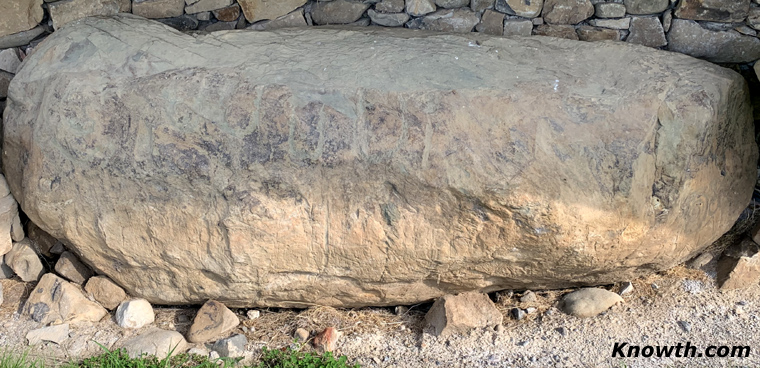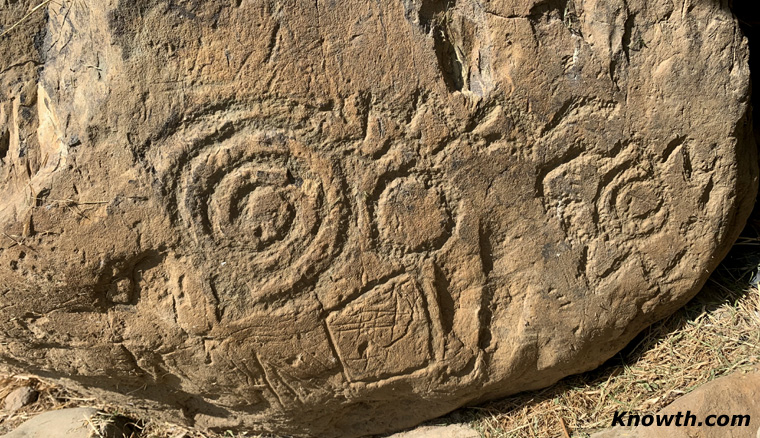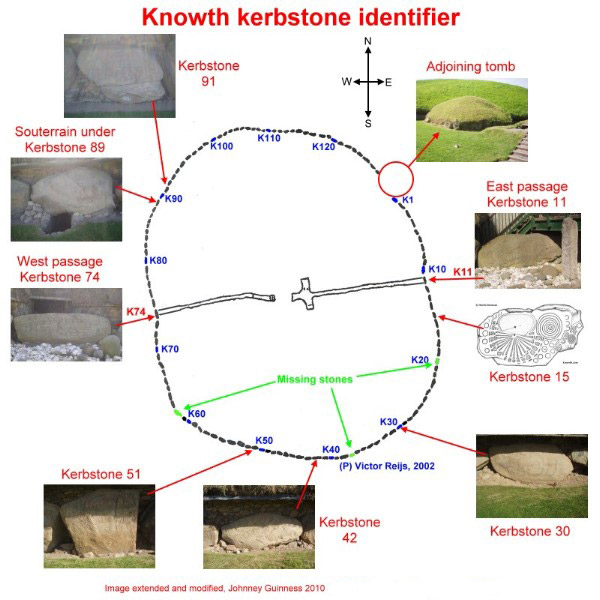The Megalithic Art of the Passage Tombs at Knowth, Co. Meath
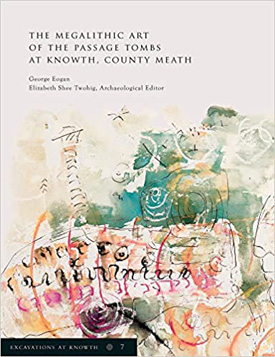 Description of Kerbstone 41
Description of Kerbstone 41
On the lower-middle and the right of the stone there is a series of angular, incised motifs, comprising several zigzags; a panel of three horizontal zigzags; four lozenges, of which two are quartered; a set of four chevrons; a crude circle; and a range of short, angular lines.
On the right end of the stone there is an incised lozenge, some chevrons and boxed arcs. Picked motifs comprise a set of three gapped, concentric circles at the top-left; a row of four U-motifs runs against the top edge of the stone and may originally have formed a serpentiform.
At the right end of the stone, above the incised motifs, a number of motifs are picked with a small, rounded point-these comprise a clockwise spiral of three turns, a small circle, a zigzag, and some lines, and on the right is a small, clockwise spiral enclosed in a zigzag frame.
Purchase at Amazon.com or Amazon.co.uk. View or Download at Digital Repository of Ireland.
Knowth is a Stone Age Passage Tomb in the Boyne Valley in Ireland's Ancient East and together with Newgrange and Dowth are the principal sites of Brú na Bóinne UNESCO World Heritage Site. Knowth is the largest passage tomb of the Brú na Bóinne complex. The main mound is about 12 metres (40 ft) high and 67 metres (220 ft) in diameter covering about 1 hectare (2.5 acres). It contains two passages placed along an east-west line and was originally encircled by 127 kerbstones of which 124 are still in place.
Boyne Valley Private Day Tour
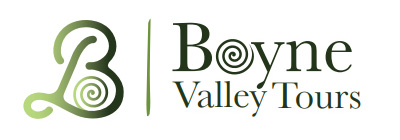 Immerse yourself in the rich heritage and culture of the Boyne Valley with our full-day private tours.
Visit Newgrange World Heritage site, explore the Hill of Slane, where Saint Patrick famously lit the Paschal fire.
Discover the Hill of Tara, the ancient seat of power for the High Kings of Ireland.
Book Now
Immerse yourself in the rich heritage and culture of the Boyne Valley with our full-day private tours.
Visit Newgrange World Heritage site, explore the Hill of Slane, where Saint Patrick famously lit the Paschal fire.
Discover the Hill of Tara, the ancient seat of power for the High Kings of Ireland.
Book Now
Home
| Newgrange
| Knowth
| Dowth
| Hill of Tara
| Fourknocks
| Loughcrew
| More Places
| Labyrinths
| Local Info
| Art Works
| Articles
| Images
| Books
| Links
| Boyne Valley Tours
| Contact

